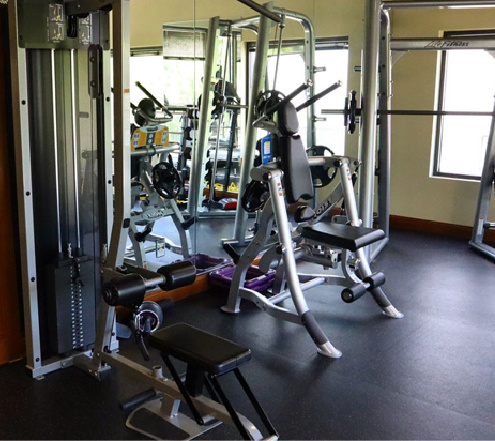A herniated disc is a common spine condition and a frequent source of neck and back pain. Although not necessarily painful by itself, herniated discs can cause painful nerve compression that results in debilitating pain and neuropathic symptoms.
A herniated disc is a common spine condition and a frequent source of neck and back pain. Although not necessarily painful by itself, herniated discs can cause painful nerve compression that results in debilitating pain and neuropathic symptoms. If you have been diagnosed with this condition, you know what a negative effect it can have on your quality of life and ability to accomplish daily activities.
For people who have fully explored conservative treatments and are still dealing with pain, back surgeries can become a serious consideration. There are a number of back surgery options for a herniated disc, and the right one for you depends on your specific diagnosis and other critical factors. To help you better understand the different back surgeries available for a herniated disc, the team at Spine Center Atlanta is happy to provide the following information.
Herniated Disc Overview
A herniated disc is a degenerative spine condition that occurs when the flexible spinal discs begin to break down due to natural age-related changes. Over time, the discs dry out and the tougher outer layer begins to develop small cracks and tears. A herniated disc develops when the softer inner layer begins to push out through a weak point.
When to Explore Surgical Treatment
Back surgery for a herniated disc is usually seen as a last-resort treatment option. Many patients are able to find the relief they need by pursuing conservative treatment options including rest, over-the-counter medication, physical therapy, and epidural steroid injections. If weeks or months of these and other treatments do not bring the relief necessary to accomplish activities of daily living and sufficiently relieve pain, your doctor may recommend back surgery.
To determine which procedure out of a range of back surgeries is right for you, patients should expect to undergo a thorough evaluation that includes:
- Review of medical and treatment history
- Thorough discussion of your symptoms and how they are affecting daily activities
- Taking diagnostic imagery, such as an MRI, or reviewing recent imagery
- A physical evaluation that includes movement and posture tests
After this evaluation, your surgeon can discuss potential back surgery options for your herniated disc.
Approaches to Back Surgeries Include Decompression, Discectomy, and Fusion Surgery
In many cases, surgeons will recommend a procedure known as a discectomy or partial discectomy. These back surgeries will generally involve removing the herniated disc material that is putting pressure on spinal nerves and causing painful symptoms. To access the herniated disc, the surgeon may need to perform another decompression procedure to remove a portion of bone to create a “working window” for the discectomy.
In more severe cases of a herniated disc, the surgeon may need to remove the entire damaged disc. This is especially true if the disc is severely degenerated and could not function with only partial removal. In this circumstance, the surgeon will need to perform a fusion surgery to stabilize the surrounding vertebrae by implanting bone graft material and hardware.
Traditional Back Surgery Techniques and Minimally Invasive Techniques
Another important distinguishing factor in different types of back surgeries for herniated disc are the specific techniques a surgeon uses to access the spine. Traditional discectomies typically require a larger incision to reach the disc and may involve moving a larger amount of supporting tissue during the procedure. Because of this, traditional spine discectomies are performed on an inpatient basis and may need a longer recovery time.
Many discectomies to treat a herniated disc can also use minimally invasive techniques to access the spine and remove herniated disc material. By using direct visualization and microsurgical technology, the surgeon can reach the disc and perform the operation through a smaller incision that involves less disruption of surrounding soft tissue. This enables the surgeon to perform a procedure, such as a microdiscectomy, on an outpatient basis and may contribute to a shorter recovery time.
Another approach to discectomy is known as a percutaneous discectomy. This is the least invasive way to remove herniated disc material. Using guidance, the surgeon uses a small needle to access the disc and remove the damaged material. This approach to discectomy is not viable for all patients, but it can be an effective surgical option.
No matter what type of back surgery you undergo, the recovery and rehabilitation process is critical to being able to regain function and strength in the neck and back. Patients should follow all postoperative instructions and commit to a physical therapy and rehabilitation program.
Reach out to Spine Center Atlanta Today
No two cases of a herniated disc are the same, and determining the appropriate course of surgical treatment requires focused expertise and experience. This is why patients from all over the United States consult with Dr. James L. Chappuis and the dedicated team at Spine Center Atlanta.
We have decades of combined experience and are specifically trained in helping patients develop a personalized treatment plan for spine conditions including herniated discs. If you have fully exhausted conservative therapies, our surgical team has extensive experience performing a full range of back surgeries at our state-of-the-art surgical suite. To provide continuity of care, patients can receive all follow-up and rehabilitative services at our on-site rehabilitation center.
For more information about your back surgery options, please contact us today at 404-620-5523.






























